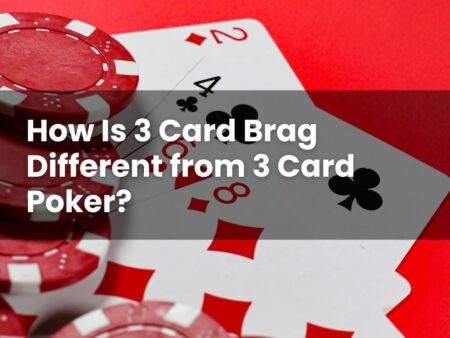If you have come across the term Blackjack Rummy and felt unsure what it actually means, you are not alone. This variation adds an extra layer to regular blackjack by recognising specific three card combinations.
Whether you have just started exploring casino games or you already enjoy blackjack, this guide explains the feature in plain language. We will also point out where rules can differ, especially at licensed UK sites, so you know what to potentially look for before you play. Read on to learn more.
What Is Rummy In Blackjack?
Rummy in blackjack is an optional side feature found in some versions of the game. It gives your opening deal a second purpose by checking whether your first two cards and the dealer’s upcard form a recognised combination, often called a rummy.
There are two core combination types. A set is three cards of the same value, such as three 7s. A run is three cards in sequence, such as 7, 8, and 9. In many versions, suits do not need to match for a run, though some variants require the same suit.
If a rummy appears, a separate payout may be offered according to the game’s paytable. The exact combinations that qualify and the amounts paid vary by table, so it could be worth reading the rules of the specific game you are playing. On UK licensed sites, this information is displayed clearly so you can see how the feature works before you start.
If you do decide to try your hand at blackjack, remember to do so responsibly and within your means; never wager more than you can afford to lose.
How Do Rummy Hands Work In Blackjack?
The rummy check happens at the very start of a hand. Only three cards are considered for it, your first two and the dealer’s face up card. If those three cards form a set or a run, the game pays the rummy outcome according to the paytable, then the blackjack hand continues as normal.
Because the three cards are fixed at the initial deal, hits, stands, doubles, and splits that follow do not change whether a rummy was present. In many versions, suits are ignored for runs unless the rules say otherwise. Aces may be counted high or low, but not both at once, depending on the table’s rules.
Here is a simple example. You are dealt 5 of clubs and 5 of diamonds, and the dealer shows 5 of spades. That is a set of three 5s, so a rummy payout applies. You still go on to play the blackjack hand to its conclusion. Rummies are not frequent, so treat them as an occasional extra rather than something that appears every few deals.
Card Combinations That Count As Rummy
In Blackjack Rummy, the recognised card groupings are sets and runs, and both use only three cards: your first two, plus the dealer’s upcard.
A set is three of a kind. If you have a 9 of diamonds and a 9 of hearts, and the dealer’s upcard is a 9 of clubs, that qualifies. Suits do not matter for sets.
A run is a straight sequence such as 5, 6 and 7. Many versions allow mixed suits, while some require all three cards to match in suit. House rules also decide how aces work in runs, for example whether an ace can be used high, low, or not at all in sequences.
Because rules on suited runs and ace handling vary, it could be a good idea to check the paytable on the specific table you are playing.
Why Does Rummy Matter In Blackjack?
Rummy adds a second way to get a return on a hand before the usual comparison with the dealer. You can receive a rummy payout even if the main blackjack hand later loses, because the two outcomes are settled independently. That keeps the opening deal more engaging and changes how often smaller wins appear over time.
It can also influence how players talk about the game. Since the rummy check happens at the start, some people pay more attention to the dealer’s upcard because it has a direct bearing on both the blackjack hand and the rummy outcome. The core blackjack decisions still apply, but the extra layer gives the first reveal a bit more meaning.
Payouts, eligible combinations, and how aces are treated are set by the table. Licensed UK sites display these details openly in the paytable, so you can see how the feature is structured and what it pays before you play.
Differences Between Standard Blackjack And Blackjack Rummy
Standard blackjack focuses on reaching a total closer to 21 than the dealer without going over. Decisions such as hit, stand, double, and split drive the outcome, and the hand ends when you compare totals.
Blackjack Rummy keeps all of that, but adds an extra check on the opening deal. Your first two cards and the dealer’s upcard are tested for a set or a run. If the combination qualifies, a separate payout applies according to the game’s rules, and then play continues exactly as it would in classic blackjack.
To illustrate, imagine you hold 10 and Q while the dealer shows J. That is a run of 10, J, Q in sequence, so a rummy payout is due. You still finish the hand and compare totals as normal. The chance of specific rummy results, such as three of a kind, is relatively low, which is why the paytable usually offers distinct returns for them.
Common Misunderstandings About Rummy In Blackjack
A frequent mistake is to assume rummy in blackjack works like the separate card game Rummy. It does not. In blackjack, rummy simply refers to specific three-card combinations checked at the start of a round, not to drawing and melding across multiple turns.
Another misunderstanding is that every blackjack table offers rummy. Many do not. If the feature is not listed in the table rules or paytable, it is not in play.
There is also confusion about which cards are used. Only three cards count for the rummy check: your first two, and the dealer’s upcard. Later hits, splits or doubles do not change that initial check.
Finally, some think a rummy hand changes the result of the main blackjack contest. In most versions it does not. A rummy payout is handled separately, and the hand then continues to its usual conclusion.








